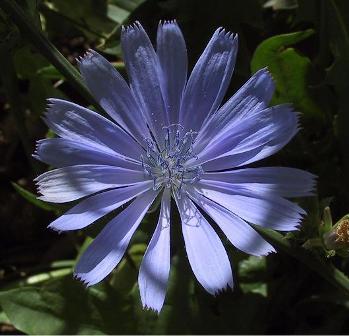Yesterday, a cool, sunny, breezy Saturday in August, members
of the Pennsylvania Native Plant Society came to ChicoryLane Farm for a
Grasses, Sedges, and Rushes plant walk led by Sarah Chamberlain of Riparia at
Penn State University.
It was another of those perception-changing days on the farm
for me, the novice in the group. I shifted
from landscape-view to microscopic-view of a whole category of plant life on
the farm, grasses (or graminoids, as the botanists say).
It was scale-shifting to go from an everyday relationship
with common plants in the wetlands to a botanical view. Everyday either I barely noticed them on my
walks around the vernal pools or the cattail marsh, or I might appreciate their
colors in the the lush late summer palette of greens and emerging yellows or
browns. Yesterday, I experienced the
botanical view, identifying and distinguishing among three plant groups
according to details of structure, some so small as to be invisible to the
human eye. I had some relevant observation
skills—I knew to observe growing conditions (eg, wet), growth habit (eg,branching),
and large structure (e.g., stem, branches, leaves). But yesterday, using a hand lens I zoomed in
to look for small-scale features (eg, bristles, with or without barbs on seeds;
wrinkles on stem-enclosing sheathes). When identification was uncertain, the botanists in the group bagged a stalk to take home for later viewing under
the microscope. For them, it was a
regular day. For me, it was
exhilarating.
It was fun, too. We
laughed often. I learned new lines for
the old mnemonic ‘sedges have edges while rushes are round.’ Add: ‘and grasses have joints when cops
aren’t around’ and ‘where cattails are
around, willows abound.’ A dry wit in
the group contributed this original joke: ‘grasses are depressing; they’re so
glumey.’ You have to be a botanist to get that one.
In an earlier visit to the farm, leader Sarah had found the
wetlands—vernal pools, farm pond, cattail marsh, wet meadow—most productive, so
we focused on those areas in yesterday’s walk.
Most of the 30 or so graminoids in ChicoryLane’s wet areas are common in
Pennsylvania wetlands, with a few being uncommon in central Pennsylvania where
we are. (Source: Sarah Chamberlain and plant
lists I have consulted after the walk).
After observing in wetlands on the south side of the lane
(under the crack willow, crossing the creek, and around the upper vernal pool),
we stopped by the farm pond for more observations, then continued through woods
past the wet meadow with soon-to-be-spectacular New York ironweed to the dry
grasslands behind the farmhouse. In farming times corn, soybeans, buckwheat grew there. Now, warm-season grasses (timothy,
orchard grass) and cool-season grasses (Big and Little Blue Stem, switchgrass, indian
grass, side oats grama) have been introduced along with a wildflower mix in a
restored Pennsylvania prairie. Voluntary natives have come along, too, some welcome (giant sunflower) and some unwelcome
(invasive teasel). In
this robust community the uncommon side oats grama is barely noticeable, but it's there. Presently, only a few small clumps of
side oats grama compete in a 12-acre field of switchgrass and blue stem grass. Side oats grama is a destination plant, one you purposely visit, rather than a vista plant such
as switchgrass or bluestem grass populating the field's horizon.
After this fine walk in glorious weather, several in the
group assembled on the porch at the Mt. Nittany Inn for supper. For non-local (Pittsburgh, Altoona, State College) members of the group, there was another
scale shift, as they scanned the panoramic view of Penns Valley seen from the Inn’s porch, looking for ChicoryLane Farm between Brush Mountain and Egg Hill.
At day’s end, John and I sat on the knoll behind the
farmhouse to watch sunset and anything else happening in the scene. In an hour of watching the sun go below Brush
Mountain and the cloud colors change from white to pink, while hearing a
neighbor’s beagle bark and bobwhite call, these sights were notable:
- two flocks of ducks flew over, circled, then settled on the farm pond (the first flock, after circling several times) or continued on (the second flock, after circling once, probably to Muddy Paws Marsh)
- a lone cedar waxwing sat on various high tree branches, quietly looking around (maybe a lost migrator searching for its noisy group?)
- two fawns walked toward us, closer and closer, unafraid altho cautious until they decided to flee, thereby giving me a close look at the pattern of white spots: two straight lines (one on each side of the spine) of uniform-size dots linearly from base of neck to tail punctuated by the white underside of the tail with a (random?) scattering of uniform-size dots on shoulders and sides. No dots on head, neck, or legs. Like a designer’s baby blanket for deer.
To paraphrase Elam Beiler, it was another beautiful day in
central Pennsylvania.
Next day, John added the 30+ newly identified graminoids to
the 5+ already on the plant list on the farm’s searchable database. I looked in Herrick, Iroquois Medical Botany, for Native
American medicinal uses of grasses, sedges, and rushes.
Catherine F. Smith
August 11, 2013
